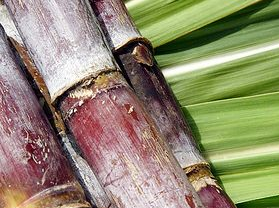 13 saw sugar prices briefly trading above USc 20/lb in mid-October, their highest point for almost a year, before embarking on a relentless downward trend to USc 16.3/lb at the time of writing.
13 saw sugar prices briefly trading above USc 20/lb in mid-October, their highest point for almost a year, before embarking on a relentless downward trend to USc 16.3/lb at the time of writing.According to Rabobank’s Sugar Quarterly Q4 2013, the fundamentals indicate prices are likely to remain under pressure for at least the next few months.
“Firm demand for imports, reaction to the Copersucar terminal fire and doubts about the Brazilian harvest were among the factors behind October’s run-up in prices,” explains Rabobank Analyst Andy Duff.
“However since then import demand has eased, the Copersucar fire was less disruptive than initially thought, favourable weather in Brazil’s Central and Southern regions, and the strengthening of the US dollar combined to keep prices under pressure through November and December.”
Rabobank’s latest projection of the global supply/demand balance for 2013/14, as outlined in the report, points to a fourth consecutive global surplus of 2.5 million tonnes, raw value. This implies a further build-up of global stocks over the 2013/14 international crop year, maintaining the global stocks-to-consumption ratio at high levels through to September 2014.
This in turn suggests that there is limited scope for world prices to move significantly above their recent levels in the coming months unless there is a change in the underlying fundamentals.
Speculation that sugar prices may receive some support from millers in the key Brazilian market arbitraging sugar and ethanol markets during the milling season looks unlikely to materialise. As the campaign in the central and southern region of Brazil winds down, the arbitrage opportunity effectively closes—mills tend to produce more ethanol at the tail-end of the season for technical reasons, and once the season is over, there is no scope to arbitrage the two markets.
As a result, the fact that market prices for both hydrous ethanol and anhydrous ethanol currently offer better returns than sugar will not provide any support for world sugar prices in the coming months.
Domestic political and economic factors in India and Mexico are expected to result in significant pressure in these countries to export large volumes of surplus production in 2013/14.
At the same time, China is expected to require less sugar, possibly much less sugar, from the world market in 2014 compared to the volume imported this year. The combination of temporary mismatches of urgent pressure to sell from some exporters and reduced import demand may also put extra pressure on prices.
The potential appreciation of the US dollar against most currencies following the gradual withdrawal of the Fed’s quantitative easing (tapering) is likely to put pressure on dollar denominated commodities. In addition, there are expectations that the Brazilian real will remain under pressure in 2014 as a result of the country’s deteriorating fiscal outlook and balance of trade.
“There appears to be a distinct shortage of potential upside influences for world sugar at present, bar the obvious proviso that the outlook for production in key countries could change over the coming months,” comments Duff.





